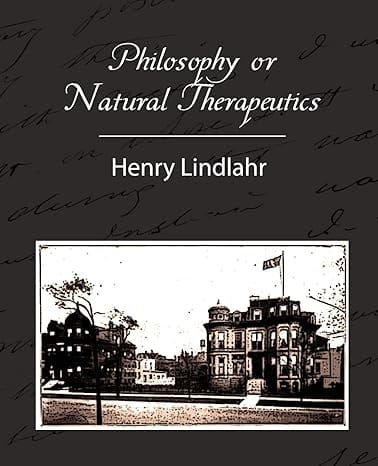Philosophy or Natural Therapeutics
In his early life, Lindlahr tried to ignore Mother Nature by stuffing himself with unhealthy food, wantonly consuming stimulants, and ignoring the symptoms resulting from over-work, a perfect storm for chronic disease to emerge. He describes his brush with chronic disease: “I reached the limits of Nature’s endurance and began to suffer greatly from the results of my ignorance and foolishness.” He continues, “At the age of 35, I found myself a physical and mental wreck without faith in God, in Nature or myself.” Being diagnosed with diabetes at the end of 19th century was often a harsh death sentence. Insulin had not been discovered. There was no cure for diabetes.
His life hanging by a thread, Lindlahr came across Louis Kuhne’s book, The New Science of Healing and read it in one sitting. The impact of its knowledge and guidance were such that Lindlahr resolved to radically change his life. He adopted and kept in play in his life the instructions laid out in Kuhne’s book. His life was forever changed. Lindlahr went on to contribute hugely to the Naturopathic profession.
Interestingly, his contributions to our understanding of disease and its origins have been symbolized by using a facsimile of the ‘Upas Tree’. In the mid-18th century, folklore circulated about this mythical tree found in a remote area in Java or Madagascar. The Upas Tree was so toxic to life that it was claimed that should any animal and human come near it, they would die on the spot. Lindlahr’s Upas Tree of disease illustrated that the soil that bred disease began by violating Nature’s laws.
A counter image to the Upas Tree can be the image of a person eating healthy food and drinking pure water, breathing clean air, having meaningful work, getting plenty of physical exercise, adequate rest, and sunshine exposure. Such practices would counter the pernicious effects of the Upas Tree. The point is that Lindlahr was pointing out with his metaphor that the roots of disease consisted of human vices such as self-indulgence, lack of self-control, ignorance and indifference to healthy choices. Cumulatively and collective such choices establish in the body a threshold and eventual foundation of lowered vitality, abnormal composition of blood and lymph, and the accumulation of morbid matter and poisons in the body. Essentially, Lindlahr and his colleagues contended, it was the wrong ways of living that resulted in acute or chronic diseases. When disease germs find in the human body the necessary conditions for growth and propagation—namely, lowered vitality, and their congenial morbid soil—they multiply very rapidly and develop all the symptoms of that particular germ disease. The causes of disease and sickness was seen through the lens of Nature. Lindlahr writes: “Barring injury by accident (trauma), and conditions uncongenial to life and health, there is but one primary cause of disease, namely, violations of nature’s laws in our habits of living, and in our treatment of the acute diseases resulting therefrom.”
Lindlahr wrote a series of books on ‘Nature Cure’, a term he embraced and used in his teaching and practice. He began publishing a magazine entitled Nature Cure in 1907. His writings elucidated the philosophical basis of naturopathic practice. His conviction about the laws of Nature permeated his practice and he established over his many years of work a strong foundation for future Naturopaths.
- Author: Henry Lindlahr
- ISBN: 9781604244229
- 544 pages
- Edition: Second
- Paperback
- Published in 2007 (Orginally 1919)
- Printed in USA

